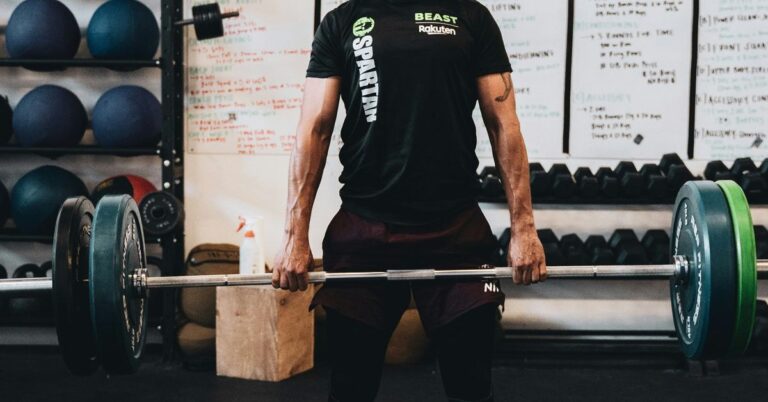Insider Hacks: How to Spot a Game-Changing Trade Before It Happens
Every sports fan has been there: the moment your team pulls off a trade that shakes the very foundation of the league. It’s a thrilling experience, a rush of excitement that can turn an average season into a championship run—or, conversely, a hopeful future into disarray. But how do some insiders seem to know these moves are coming even before the ink is dry on the contract? It’s not just luck; it’s a blend of savvy observation, analytical skills, and a sprinkle of intuition. So, grab your notepad (or just your favorite beverage) as we delve into the art of spotting game-changing trades before they happen.
Understanding the Landscape
To predict a trade, you need to grasp the context. This means immersing yourself in the current state of the team and the league at large. Each season brings its own set of dynamics, from emerging talent to veteran players seeking a fresh start. As I recall, back in the day when the Golden State Warriors were making headlines, savvy analysts noticed the subtle hints of change long before the team became a dynasty.
Start by observing team performance. Are they struggling? Is there a standout player who is being underutilized? Sometimes a team’s struggles can signal a breakup is imminent. Take, for instance, the 2018-2019 season when the Los Angeles Lakers were floundering. Rumors swirled around their star players, and it became evident that changes were on the horizon. A team’s performance is like a book; you just need to know where to look.
Deciphering the Roster Moves
Roster moves aren’t merely about numbers; they’re about strategy. Every team has a vision, and sometimes that vision shifts. As a journalist, I’ve had the privilege of talking to coaches and executives who often mention that they’re not just looking at who performs well, but who fits into their long-term plans. If a player is consistently landing on the trade block, there’s usually a reason. Here are some signs to look for:
- Increased Trade Rumors: When a player’s name starts popping up in trade discussions, take note. Sometimes, it’s just noise, but other times it’s a genuine signal of impending change.
- Contract Situations: Players on expiring contracts or those who are unhappy with their deals are prime candidates for trades. The clock is ticking, and teams often need to make a move before it’s too late.
- Performance Trends: If a player’s performance is declining, teams might look to offload them before their value drops further. Remember, it’s all a game of timing.
In 2015, for example, the New Orleans Pelicans were faced with the reality of their roster. With Anthony Davis becoming the focal point, the team began shopping around players like Eric Gordon—a move that led to significant changes in the franchise’s makeup.
The Importance of Insider Knowledge
Ah, insider knowledge—the secret sauce of trade analysis. While it’s not always accessible, it helps to develop relationships with those in the know. I recall chatting with a scout who casually dropped hints about players being unhappy during the offseason. This kind of info is gold. Here are a few ways to gather insider insights:
- Follow Beat Writers: These journalists are on the front lines, covering teams daily. Their insights can often hint at upcoming moves or dissatisfaction within the locker room.
- Listen to Podcasts: The rise of sports podcasts has opened up avenues for insider knowledge. Analysts often share rumors and speculation that can give you an edge.
- Attend Games: There’s something about being in the arena. You can catch the body language of players and coaches that you simply can’t see on television.
In one memorable instance, I caught wind of a potential trade involving a well-known player during a casual conversation at a bar. The bartender, a former player himself, mentioned some friction behind the scenes—just enough to get my radar up. It turned out to be spot on, and it was fascinating to see how that unfolded.
Analyzing Team Needs
It’s essential to understand what each team needs at any given moment. A franchise in rebuilding mode will look for different assets than one chasing a championship. Teams often have specific needs based on injuries, performance gaps, or even playoff positioning. I remember when the Boston Celtics were deep into their playoff run, and there were whispers about them needing a better defensive presence. Sure enough, they made a move that not only solidified their lineup but hinted at a desire for long-term success.
Here’s a checklist to help you evaluate team needs:
- Injuries: A team might need to adjust quickly to injuries to key players.
- Performance Gaps: If a particular position is underperforming, that’s a glaring need.
- Contract Situations: Teams may look to replace players on expiring contracts with someone who fits their strategy better.
For instance, when the Toronto Raptors were in search of a playoff push, they traded for Kawhi Leonard, who was exactly what they needed. It’s a classic case of identifying a team’s need and filling it to create a potentially game-changing situation.
Keeping an Eye on the Market
The trade market is always evolving, and keeping tabs on it can be quite the challenge. I remember a distinct moment during the NBA trade deadline—everyone was holding their breath, waiting for the big moves. It was like waiting for a train that might never come. But those who had been paying attention were ready; they had seen the signs. As teams assess their own rosters, they also evaluate what other teams are doing. Look for patterns in trades and signings. Is there a team that seems to be hoarding assets? That could be a sign they’re gearing up for a big move.
Here are a few pointers to monitor the trade market:
- Watch Cap Space: Teams with significant cap space can become players in the trade market, especially if they’re looking to leverage that flexibility.
- Timing is Key: The closer you get to the trade deadline, the more frantic the activity. Teams under pressure to make the playoffs will move quicker.
- League-Wide Trends: Sometimes a trend will emerge—like teams focusing on younger talent or prioritizing defensive skills. Recognizing these trends can give you insight into potential trades.
Take, for example, the Houston Rockets during their rebuild. They recognized the need to acquire young prospects and draft picks. It wasn’t just a matter of making trades; it was about building a culture that aligned with their vision.
Studying Player Relationships
Sometimes a trade comes down to personal relationships—players, agents, and front office staff all have ties that can influence decisions. I remember a conversation with a former general manager who mentioned how a player’s relationship with a coach could make or break a trade. If a player isn’t getting along with the coach, you can bet the team’s front office is weighing their options. It’s like a soap opera, really. Who knew sports could be so dramatic?
Here’s how to gauge player relationships:
- Social Media Activity: Players often share their feelings online, and a sudden lack of posts about their team can indicate dissatisfaction.
- Comments from Players: Pay attention to what players say about each other during interviews. If there’s tension, it can lead to a trade.
- Agent Influence: Agents play a huge role in shaping a player’s future. If an agent is vocal about a player’s desire to move, it’s worth considering.
For instance, when Jimmy Butler was unhappy in Minnesota, the rumblings were everywhere. It wasn’t just his performance on the court; it was how he interacted with teammates. His eventual trade to Philadelphia didn’t come out of nowhere—it was a perfect storm of relationships gone awry.
Trusting Your Instincts
In the end, sometimes it’s about trusting your gut. I’ve heard stories from veteran reporters who, after years in the field, just knew when something was brewing. It’s a combination of experience, knowledge, and a little bit of intuition. Maybe it’s standing on the sidelines and watching a player’s body language during a game, or perhaps it’s catching a glimpse of a coach’s reaction after a tough loss. There’s an art to this, one that comes with time and practice.
Here are a few tips for honing your instincts:
- Be Observant: Pay attention to the little things. The way a player interacts with teammates, or the tension in a press conference can be revealing.
- Stay Informed: The more you know about the league, the better your instincts will become. Read, watch, and absorb everything you can.
- Network: Talk to others who share your passion. Sometimes a conversation can spark an idea that leads to a breakthrough.
Much like a detective, you have to piece together clues. A hunch about a trade might just turn out to be a revelation.
Conclusion: The Thrill of the Chase
Spotting a game-changing trade before it happens is a blend of art and science. It requires keen observation, contextual understanding, and a knack for reading between the lines. As you dive into the world of trades, remember to keep a notebook handy (or just use your phone—who am I kidding?). Document your thoughts, track your predictions, and, most importantly, enjoy the journey. There’s an undeniable thrill in being one step ahead of the game, especially when your insights turn out to be spot on.
And who knows? Maybe one day, you’ll be the one breaking the news before it hits the headlines. Just remember to give me a shout-out when you do!













